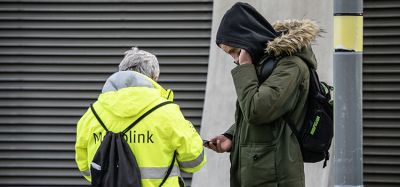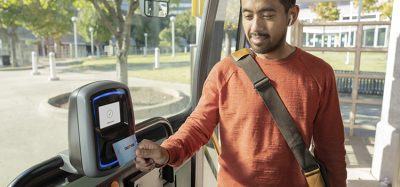Securing our future
- Like
- Digg
- Del
- Tumblr
- VKontakte
- Buffer
- Love This
- Odnoklassniki
- Meneame
- Blogger
- Amazon
- Yahoo Mail
- Gmail
- AOL
- Newsvine
- HackerNews
- Evernote
- MySpace
- Mail.ru
- Viadeo
- Line
- Comments
- Yummly
- SMS
- Viber
- Telegram
- Subscribe
- Skype
- Facebook Messenger
- Kakao
- LiveJournal
- Yammer
- Edgar
- Fintel
- Mix
- Instapaper
- Copy Link
Posted: 30 June 2010 | Geoff Dunmore, Chair of UITP Security Commission and Operational Security Manager, London Underground | No comments yet
2008 marked a turning point in the history of humanity. For the first time ever, more than half of the population (3.3 billion people) of the world now lives in urban areas. This figure is set to rise to five billion by 2030. This trend challenges the way urban spaces function. With mobility an essential element to support economic activity and social inclusion, and with many cities around the world already in gridlock due to congestion, public transport is a key part of the solution for greener, cleaner and more prosperous cities.
2008 marked a turning point in the history of humanity. For the first time ever, more than half of the population (3.3 billion people) of the world now lives in urban areas. This figure is set to rise to five billion by 2030. This trend challenges the way urban spaces function. With mobility an essential element to support economic activity and social inclusion, and with many cities around the world already in gridlock due to congestion, public transport is a key part of the solution for greener, cleaner and more prosperous cities.
2008 marked a turning point in the history of humanity. For the first time ever, more than half of the population (3.3 billion people) of the world now lives in urban areas. This figure is set to rise to five billion by 2030. This trend challenges the way urban spaces function. With mobility an essential element to support economic activity and social inclusion, and with many cities around the world already in gridlock due to congestion, public transport is a key part of the solution for greener, cleaner and more prosperous cities.
These challenges, as well as how the public transport sector can respond, are outlined in the UITP Strategy ‘Public Transport: the smart green solution’1. With this strategy, UITP promotes the objective to double the public transport market share by 2025.
To achieve this, public transport must be the mode of choice for citizens. But what does public transport need to look like in order for it to be the number one option? It has long been acknowledged that the modern public transport user expects a reliable, comfortable and attractive service. A competitive travel time is often the first requirement, together with convenience and affordability. These are very concrete and objective specifications, but the modern public transport user also has a long list of subjective needs which are equally important if they are to be encouraged out of their private cars: cleanliness, friendly and helpful staff, real-time information. Passengers are paying customers, and they expect a certain level of customer service that they can enjoy in other service sectors.
They also expect to feel safe, secure and confident enough to use the service. But when we talk about public transport security, we are talking about two distinct scenarios: actual risk and perceived risk.
Actual risk
There is no doubt that security risks in public transport exist. Pick-pocketing, in particular as crowded places and relative anonymity provide fertile ground for this type of crime, and vandalism is a major affliction for many Western public transport organisations. The cleaning up of graffiti and vandalism is in some cases the biggest expenditure in the security budget. At the other end of the spectrum, no-one needs to be reminded of the deadly terrorist attacks which took place recently in Moscow and eastern India. And London itself is of course no stranger to terrorism on its network.
In reality, however, public transport without doubt remains the safest form of transport: research suggests that you are still 10 times more likely to be involved in a fatal road-traffic incident than a fatal public transport incident, no matter what the cause of the incident. General crime on London Underground is in fact on the decrease, not on the rise. The actual risk will always exist, but it is, in reality, extremely low.
Perceived risk
So why is it then that the ‘feeling’ of insecurity is so prominent in public transport? Typically, the users’ experience of public transport systems is that nobody is in control or managing the public space, and that it is impersonal. When this happens, it creates a lack of confidence in the system, which in turn encourages criminal activity to thrive. And so a vicious circle begins.
So what can be done to combat these actual risks and improve the perception of security for passengers and staff? In 2004, the International Association of Public Transport (UITP) set up the ‘UITP Security Commission’ dedicated to this topic. The Commission gathers security practitioners from public transport organisations around the world and seeks to study, assess and promote innovative solutions through operations and technology for enhanced public transport security.
Through this work we know that there are many measures which can be taken to combat security risks, both actual risks but also addressing the trickier issue of perception. So what are they?
It is widely agreed that the first step in public transport security should be to conduct a security risk assessment.
Risk assessment
Conducting a security risk assessment is the best known way to assess needs and define priorities. It helps make sure that scarce resources are invested where they are most needed.
UITP is currently promoting the Guidelines for Conducting Risk Assessment in Public Transport Networks2 which were developed in the context of a European Project entitled COUNTERACT, coordinated by UITP. The guidelines have already been successfully implemented by several public transport operators in Europe. In addition, UITP is making training courses available for using the guidelines3.
After understanding the risks, a combination of technological, procedural and human measures can be implemented to reduce them.
By its very nature, public transport must be relatively easy to access by the masses. Therefore, security cannot be all about preventing incidents – it is well known that 100% security is not realistic, and in any case the prevention of crime is a shared responsibility between the operators, society and the authorities. Preparing to respond as quickly and as efficiently as possible, in order to re-establish normal service, is often the priority of public transport organisations. It can never be emphasised enough that the core business of the public transport operator is to transport people from one point to another as efficiently as possible, and any security measure implemented must always endeavour to support this principle, not hinder it.
The ‘H’ factor
The human factor cannot be underestimated. Many public transport operators provide operational staff, security personnel either as employees or contractors and, or police to provide a human presence, in the belief that having people visible and available gives customers the confidence that they are being looked after.
This approach can only work properly if those employees or contractors are actively engaged with passengers and know and understand what is normal in the environment and are capable of responding to a variety of different needs. In London Underground, there is a heritage of providing operational customer service staff and a conscious decision by senior management to maintain and strengthen this further. When considering what security training was necessary, it was discovered that most of this was already provided through customer service training which encourages staff to actively engage with customers, identify anything that is unusual and take action when emergency situations occur (which covers a range of different scenarios and includes the ability to evacuate either locally or on a network basis). The evidence that this works is clear from the results of customer perception research which shows that customer service levels have achieved the highest results ever and that the element that measures customer perception of safety and security is the single highest element. Add to that the low levels of actual crime which has reduced year-on-year over five years.
The real proof however lay with the response from Tube staff to the terrorist attacks on 7 July 2005 where they were the first on the scenes and were able to fall back on their training in caring for the dying and injured and evacuating the whole system within an hour.
It doesn’t matter whether the model used for staff presence is via an organisations’ own work force or contracted in, the real key is active engagement and in depth knowledge of the environment.
Technology
There is no doubt that there are many promising technological developments underway and technology will play an increasing role in assisting operators in security matters. UITP and London Underground, among other operators and industry partners, are currently preparing a large European project with the objective to test various technological solutions. The hope is that some of these solutions will be fine-tuned to fit better with the public transport environment, which will obviously be advantageous both for the industry side and the operator side of the public transport security sector.
CCTV
The most talked about technology for public transport security is of course CCTV. It was first introduced on London Underground in the 1960s as an operational and safety tool, it enabled safe operation for one-person operated trains on the Tube system. The use of CCTV as a security tool came later in the 1990s when it was primarily used as a means to prevent crime and proved invaluable in detecting and prosecuting criminals. The best example of this was the failed terrorist attempts on 21 July 2005 when within hours of the attempts, clear photo images of the perpetrators were shown worldwide giving them no place to hide.
London Underground has continued to invest in CCTV though public-private partnerships and have now in excess of 12,000 cameras across the system capturing digitally recorded data which is used to great effect to reduce levels of crime and give confidence to customers that they are being watched over.
With so much data being captured there is also an important societal responsibility for organisations; that the data is being used for the correct purposes and it is vital that civil liberties and data protection legislation is adhered to.
Advances in technology mean that CCTV can become more of a proactive tool than a reactive post event tool and with sensible joint working with the technological industry it can become a useful tool to prompt operators where their attention is needed. This is proven technology in relatively low volume locations but the real challenge for the industry is to find the technology that can work in crowded mass transit environments.
The UITP Security Commission will soon publish a report on CCTV4 looking at these issues, with the objective to help public transport operators make the most of its potential.
It is often said that you cannot make mass transit public transport systems totally safe and secure from those intent and determined to cause harm. There is an element of truth in this and there is no silver bullet. There is, however, still a lot that public transport operators and authorities can do to reduce the risk. The threat will never go away and we can never afford to be complacent. But being prepared and dealing with the challenges quickly and effectively remain the best defence and will continue to provide the safest form of transport, giving citizens and cities what they need in terms of mobility, speed, comfort, safety and security.
References
- www.uitp.org/advocacy/public_transport.cfm
- www.uitp.org/knowledge/projectsdetails. cfm?id=433
- www.uitp.org/events/trainings.cfm
- www.uitp.org/publications
About the author
Geoff Dunmore
Geoff joined London Underground in 1975 and has served in a variety of operational and senior management roles during the last 35 years. Since 2002, he has been the Operational Security Manager for London Underground where his main responsibilities are leading a specialist team, liaising with other agencies, to ensure that counter terrorism and crime and disorder matters are effectively addressed. He was personally involved with the response to the terrorist incidents on 7 and 21 July 2005 in London. He has given many international presentations to transport providers and government authorities on the unique challenges faced in providing security in a mass transit environment. In May 2007, he was elected as the Chair of the UITP (International Association of Public Transport) Security Commission and re-elected for a second term in 2009.
Related topics
Security & Crime
Issue
Issue 3 2010
Related organisations
London Underground
Related people
Geoff Dunmore







